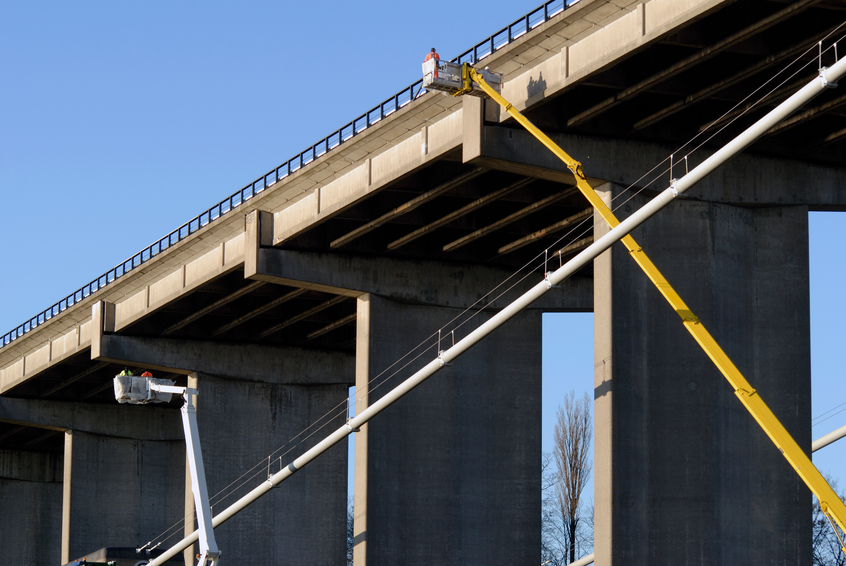Interactive & Video Discount Package - Maryland Structural and Ethics 16 PDH
Designing Earthquake Safe Schools (S02-302)
Engineering Principles and Practices for Retrofitting Flood-Prone Residential Structures – Part 1 (S03-302)
Installing Seismic Restraints for Mechanical and Electrical Equipment (S01-305)
The Collapse of The World Trade Center Building 7 (LE4-301)

The presentation begins with a discussion of tsunami hazards, historical tsunami events, and the unique effects of tsunamis on buildings and infrastructure. It delves into key considerations for selecting, planning, and designing vertical evacuation structures, including hazard and risk assessment, probabilistic and deterministic modeling, and lessons learned from past events. Participants will gain insights into tsunami hazard mapping, inundation modeling, structural design for tsunami loads, debris impact, scour, uplift forces, and strategies for preventing progressive collapse.
Additionally, the presentation addresses regulatory guidance, decision-making frameworks, and examples of successful vertical evacuation strategies implemented in tsunami-prone regions.
This 2 PDH online interactive presentation is designed for civil and structural engineers, architects, planners, and emergency management professionals who seek to enhance their understanding of tsunami hazard mitigation, improve design standards for refuge structures, and safeguard coastal populations.
This continuing education interactive presentation is intended to provide you with the following specific knowledge and skills:
- Discussing the role of vertical evacuation structures as a mitigation strategy for tsunami risk in vulnerable coastal communities
- Understanding tsunami hazards, historic tsunami events, and the effects of tsunamis on buildings and infrastructure
- Exploring key considerations for selecting, locating, and planning vertical evacuation structures based on hazard assessment and risk analysis
- Familiarizing with current tsunami hazard modeling methods, inundation mapping, and limitations of available tools and data
- Learning about probabilistic and deterministic approaches to tsunami hazard assessment and their application in evacuation planning
- Knowing lessons learned from past tsunami events and implications for improving hazard assessment and planning of vertical evacuation strategies
Upon successful completion of the quiz, print your Certificate of Completion instantly. (Note: if you are paying by check or money order, you will be able to print it after we receive your payment.) For your convenience, we will also email it to you. Please note that you can log in to your account at any time to access and print your Certificate of Completion.

This online engineering PDH interactive presentation provides an overview of the risk of earthquakes to schools and the processes and methods that can be used to reduce it.
Earthquakes have long been feared as one of nature’s most terrifying phenomena. In the aftermath of any damaging earthquake, there is an immediate need of shelter for people who have been displaced from their homes. In earthquake-prone regions, school sites are often used to provide immediate shelter. However, possible use of school buildings as a safe haven for the community involves complex design and construction issues. This presentation outlines the earthquake risk to schools and the processes and methods that can be used to reduce it.
An explanation of the nature and probability of earthquakes is provided, together with procedures for determining the earthquake threat to specific locations and for evaluating the vulnerability of a school building. An assessment of the scope and effectiveness of seismic building codes is followed by a description of current methods of designing for seismic resistance in new buildings and upgrading existing buildings. Lastly, this presentation presents guidance for school districts, facility planners, and designers on determining acceptable risk and the use of performance-based design.
This 2 PDH online course is intended for structural, civil, mechanical and construction engineers, and would also be of particular interest to engineers serving as consultants to school officials involved in the technical and financial decisions of school construction, repair, and renovations.
This continuing education interactive presentation is intended to provide you with the following specific knowledge and skills:
- Understanding the nature and probability of earthquakes
- Understanding the vulnerability of schools
- Understanding earthquake damage to schools
- Learning about seismic codes and schools
- Knowing the effectiveness of seismic codes
- Evaluating existing schools for seismic risk and specific risk reduction methods
- Learning about risk reduction for existing and new schools
- Understanding the role of a school as a post-earthquake shelter
Upon successful completion of the quiz, print your Certificate of Completion instantly. (Note: if you are paying by check or money order, you will be able to print it after we receive your payment.) For your convenience, we will also email it to you. Please note that you can log in to your account at any time to access and print your Certificate of Completion.

This online engineering PDH course provides engineering design and economic guidance to engineers, architects, and local code officials about what constitutes technically feasible and cost-effective retrofitting measures for flood-prone residential structures.
The focus of this course is the retrofitting of one- to four-family residences subject to flooding situations without wave action. It presents various retrofitting measures that provide both active and passive efforts and employ both dry and wet floodproofing measures. These include elevation of the structure in place, relocation of the structure, construction of barriers (floodwalls and levees), dry floodproofing (sealants, closures, sump pumps, and backflow valves), and wet floodproofing (flood damage-resistant materials and protection of utilities and contents).
Also, It delves into the regulatory landscape, highlighting the roles of local officials and the guidelines set forth by the National Flood Insurance Program (NFIP) and the International Building Code (IBC). The course further examines the critical factors influencing retrofitting decisions. Additionally, it offers guidance on identifying and addressing specific hazards to determine the most suitable retrofitting solutions for residential structures. Therefore, the focus of this course is on retrofitting buildings that are subject to flooding.
This 3 PDH online course is applicable to structural engineers, geotechnical engineers, and environmental engineers and professionals who are interested in learning more about the design, analysis, and implementation of measures to mitigate flood risks and improve the resilience of residential structures against natural hazards.
This PE continuing education course is intended to provide you with the following specific knowledge and skills:
- To know what is retrofitting
- To know about various flood retrofit options, including their definitions, advantages, and disadvantages
- To understand the community floodplain management and building code environment
- To learn about the factors influencing retrofitting decisions
- To gain guidance on determining specific hazards to identify the most suitable retrofitting solutions for residential structures
Upon successful completion of the quiz, print your Certificate of Completion instantly. (Note: if you are paying by check or money order, you will be able to print it after we receive your payment.) For your convenience, we will also email it to you. Please note that you can log in to your account at any time to access and print your Certificate of Completion.

This online engineering PDH interactive presentation provides information on the installation of different types of seismic restraints for mechanical and electrical equipment.
Seismic restraints are special devices that can be installed to buildings to minimize earthquake damage. These devices can be mechanical or electrical and include isolation systems, roof attachments, cable or strut attachments, and steel shapes.
This course shows equipment installers how to attach mechanical equipment to a building to minimize earthquake damage. Many attachment examples are presented, to include anchoring and the use of special devices such as seismic restraint devices.
This 1 PDH online interactive presentation is applicable to structural engineers and all professionals who are interested in protecting their mechanical and electrical equipment from seismic damage.
This PE continuing education interactive course is intended to provide you with the following specific knowledge and skills:
- Identifying mechanical and electrical equipment and selecting the appropriate method for its installation
- Familiarizing with the different types of attachments
- Familiarizing with the various types of anchors
- Understanding the different methods of supporting control panels and attaching lighting fixtures
- Understanding the various methods of attaching HVAC equipment to residential structures
- Learning how to design housekeeping pads for seismic measures
Upon successful completion of the quiz, print your Certificate of Completion instantly. (Note: if you are paying by check or money order, you will be able to print it after we receive your payment.) For your convenience, we will also email it to you. Please note that you can log in to your account at any time to access and print your Certificate of Completion.

This online engineering PDH interactive presentation provides a detailed analysis of the factors and events that caused the collapse of World Trade Center Building 7 on September 11, 2001. It covers structural and fire safety challenges, investigative methods for identifying the collapse's probable cause, and insights for enhancing building codes and emergency response strategies.
This presentation outlines the events leading to the collapse and examines the structural and fire safety challenges encountered. It explains how fire-induced thermal expansion contributed to the building's failure and discusses the implications for fire safety standards and building codes. Additionally, it provides insights into the technical findings from the collapse and their relevance to future building designs, as well as broader lessons for improving emergency response and resilience.
This 4 PDH online interactive presentation is designed for engineers, architects, emergency management professionals, and other stakeholders in building safety and disaster preparedness.
This continuing education interactive presentation is intended to provide you with the following specific knowledge and skills:
- Knowing the sequence of events leading to the collapse of World Trade Center Building 7
- Exploring the structural and fire safety challenges faced during the incident
- Familiarizing participants with the investigative methodologies used to determine the probable cause of the collapse
- Understanding the role of fire-induced thermal expansion in triggering the structural failure of the building
- Learning about the technical and engineering insights derived from the collapse and their application to future building designs
- Gaining insight into the collaboration among agencies during the investigation and response to the collapse
Once you finish watching the PDH interactive presentation, you will be redirected to your account to take a multiple-choice quiz consisting of twenty (20) questions to earn 4 PDH credits.
Upon successful completion of the quiz, print your Certificate of Completion instantly. (Note: if you are paying by check or money order, you will be able to print it after we receive your payment.) For your convenience, we will also email it to you. Please note that you can log in to your account at any time to access and print your Certificate of Completion.

This online engineering PDH video presentation introduces the laws and rules of ethics and professional responsibility governing the practice of engineering in the State of Maryland. It also emphasizes on behavior as a professional member of the workforce.
This video presents the provisions of professional conduct from two viewpoints. First, your conduct as a professional engineer with behavior that is unique to engineers such as stamping drawings, signing official or technical documents, preparing estimates for clients or employers, and submitting engineering reports to official agencies. Second, your behavior as a member of the larger workforce where you communicate with team members, follow company policies and procedures, and your overall behavior as part of a workplace community.
Furthermore, this presentation discusses the disciplinary cases and its outcomes in situations where professional engineers have violated the requirements of professional responsibility and ethical conduct – the decisions we make when no one is watching.
This 1 PDH online video presentation is applicable to Professional Engineers licensed in the State of Texas and who are required to demonstrate continuing professional competency in engineering ethics as a condition of their license renewal. For each renewal period, every licensee must complete fifteen (15) professional development hours, at least one (1) of which must be relative to the Maryland Laws and Rules, or to the rules of professional responsibility, conduct and ethics.
This PE continuing education video presentation is intended to provide you with the following specific knowledge and skills:
- Understanding the laws and rules regulating the practice of engineering in the State of Maryland and acquainting with the links to their key website resources
- Learning how to identify desirable conduct as a professional engineer and as a member of the greater workforce
- Knowing how to discuss and demonstrate proper methods of dealing with undesirable behavior from others
- Familiarizing with ethical and disciplinary case studies depicting various violations and their corresponding penalties
Upon successful completion of the quiz, print your Certificate of Completion instantly. (Note: if you are paying by check or money order, you will be able to print it after we receive your payment.) For your convenience, we will also email it to you. Please note that you can log in to your account at any time to access and print your Certificate of Completion.